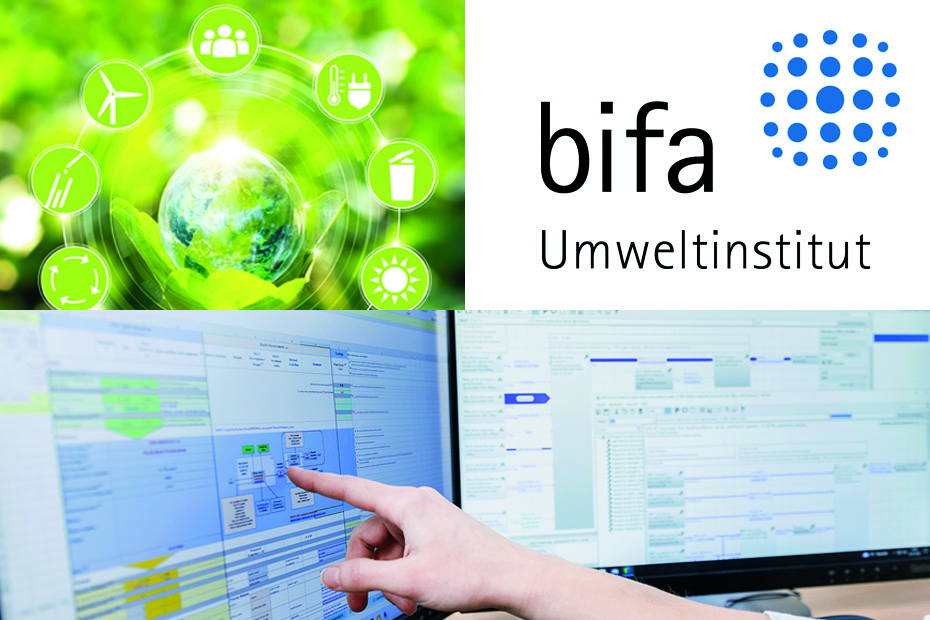The PHOTORAMA consortium is made up of a team of several organizations, all bringing their specific expertise to the project. We have asked Kerstin and Matthias from Bifa to tell us more about what Bifa’s role has been so far in PHOTORAMA.
Hello Kerstin, hello Matthias thanks a lot for taking the time to chat with us today. Can you shortly introduce your organization, your team and explain its role in PHOTORAMA?
We are from the bifa environmental institute, Augsburg Germany. As an application-oriented research, development, and consulting institution, we offer a wide range of services. These include process engineering and technical chemistry, energy technology and energy management, biological process engineering and analytics, life cycle assessment and systems analysis, as well as strategy development, communication, and policy consulting. The bifa Umweltinstitut was founded in 1991 by the Free State of Bavaria, the City of Augsburg and the Swabian Chamber of Industry and Commerce. Today, bifa is one of the leading application-oriented research, development and consulting institutions in Germany, offering customized, wide-ranging environmental services and conducting research for practical applications. Our customers come from all industries and receive individual consulting, analysis and development services in the environmental field from us. Our research partners are companies, municipalities and renowned institutes. Based on extensive experience in technical, ecological and economic issues, we work on special tasks but also analyse complex value chains. We support companies and public institutions with our expertise and provide independent decision-making bases for associations and political actors at the municipal, state or federal levels. The core members of the bifa team for the PHOTORAMA project are Karsten Wambach, who keeps up the contact with the Internation Energy Agency and both of us, Kerstin and Matthias.
What are you currently working on? What is happening now?
K: Currently, I am working on the waste assessment from the pilot line. The properties found in the waste (e.g. content of hazardous substances, the content of critical raw materials, content of SVHC[1]) determine whether we categorize it as end-of-waste or a by-product and therefore the options for waste disposal.
M: For the life cycle assessment, we monitor the technical progress of the project by collecting data and modelling the material and energy flows in a life cycle assessment software. This allows us to compare the environmental impact of the project with the “status quo”, i.e. the current method of recycling or disposal. In addition to the ecological assessment, another aspect of my work in collaboration with the project partners is the identification of exploitation routes for scale-up and commercialization by drafting a business plan. This involves an assessment of the economic aspects of the PHOTORAMA technology developments.
What does your specific expertise add to the consortium?
K: Our production line not only generates production waste such as silicon scrap but also other waste streams containing chemicals or residues that could hinder recycling.
M: With our work on both the environmental and economic aspects of the project, we complete the analysis and raise the perspective to a more comprehensive level.
Why, according to you, do we need a project like PHOTORAMA?
K: First End of Life (EoL)-modules are emerging in Germany and Europe and they contain important raw materials, which are needed. Their volume will increase as we keep developing PV capacities, constraining landfill capacities. I think we urgently need to come up with solutions for avoiding waste volumes, conserving the remaining landfill capacities and recovering valuable raw materials.
M: PV modules are combinations of different materials, which cannot be separated easily. In projects like PHOTORAMA, you can therefore try out different approaches and choose the best one to open up the PV ‘sandwich’[2] construction and achieve better recyclability. It is very important for the further establishment of renewable energies that the possibilities for material efficiency and environmental impact are presented to a broad public.
What is the biggest challenge to bring upon PV circularity?
The variety of module types (e.g. dimensions, thin-film, crystallin, …), the different materials used (lead, silver, copper, …) and a design with sealants and so on, which is not very recycling friendly.
What would you like to have achieved at your scale by the end of the project?
We want to demonstrate that the pilot line is ecologically better than the existing processes as it generates less waste of higher quality.
Thank you, Kerstin and Matthias, for this overview of bifa’s work in PHOTORAMA!
[1] Substance of Very High Concern. This term is used under the European Union’s REACH Regulation (Registration, Evaluation, Authorisation, and Restriction of Chemicals) to identify chemicals that may have serious impacts on human health or the environment.
[2] Refers to the layered structure of a photovoltaic (PV) solar cell or module, where different materials are “stacked” to convert sunlight into electricity efficiently.
